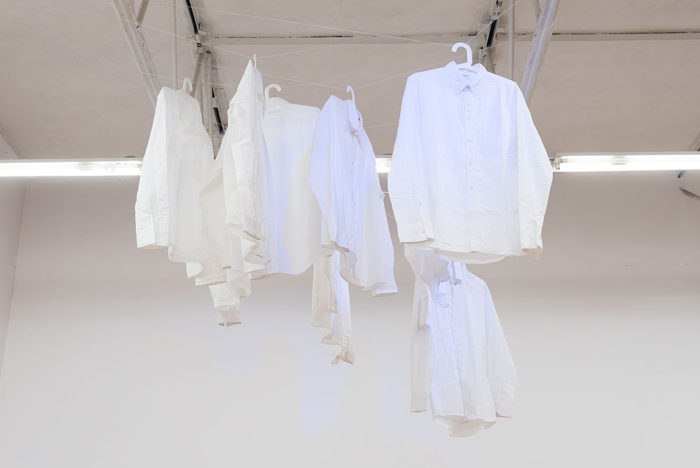Marian Stępak
Gliding over Reality
installation, 2020

A reference to reality I have borrowed from Grzegorz Dziamski's text, published in the Lubuskie “Pismo Literacko – Kulturalne [Literary – Cultural Magazine] Pro Libris” (nr 1-2/2019). There, I found a quotation from Wojciech Śmigielski's interview with Zenek Polus, recalling André Breton's idea: “that any person who has a creative attitude to reality may be an artist.” In this context, I very well remember an exhibition of artists from Zielona Góra in the Nad Wisłą Gallery in Toruń, in 1996, where Zenek presented his object, Collection. The object had been constructed from various elements, while references to reality hidden therein I was able to discover only during the disassembly of the piece. I also remember that what remained hidden for the viewers was another, superimposed quality. At that time, I instinctively classified Zenek's piece as emballage, but one bereft of an outer covering, so characteristic for this medium of art. A peculiar wrapping seemed to me the intriguing solid of the structure of the object, meticulously composed by its creator, concealing what he did not want to reveal in a direct fashion. The process of enveloping 'secret' parts of the work in pieces of grey felt I remember just as well!
A creative attitude to various situations we encounter and discover within ourselves I find equally familiar. I remembered that, in 1975, when I was a third grade student of a visual art secondary school in Bydgoszcz, I started experimenting with the matter of art. I considered initial exercises I completed with the use of worn clothes to be my great discovery. At the time, I did not know that, for over a decade, a new art movement had existed in Italian art: arte povera. The course of my explorations at that time was such that it imperceptibly constituted a basic profile of my creative work. Those early struggles with matter had led me to producing my graduation piece, since thanks to my lasting fascinating with discovered matter, during my university studies, I continued my previous experiences. In time, I began to call productions of a similar type 'textile paintings'. Basically, I have never intervened in the impeccability of extant reality, avoiding the composition of assemblages, and gave titles taken from everyday life to my exhibitions. They were, therefore, plain, common things and references to the passing of time.